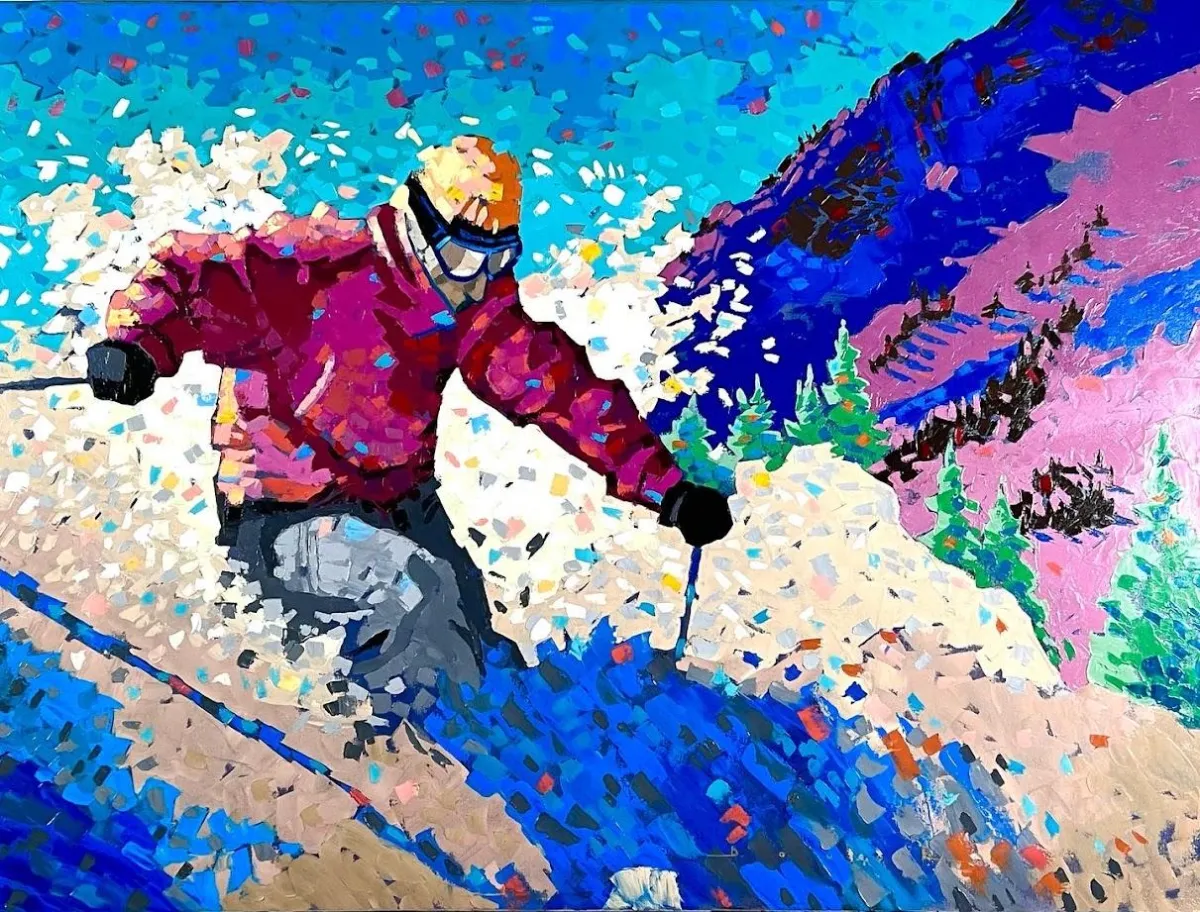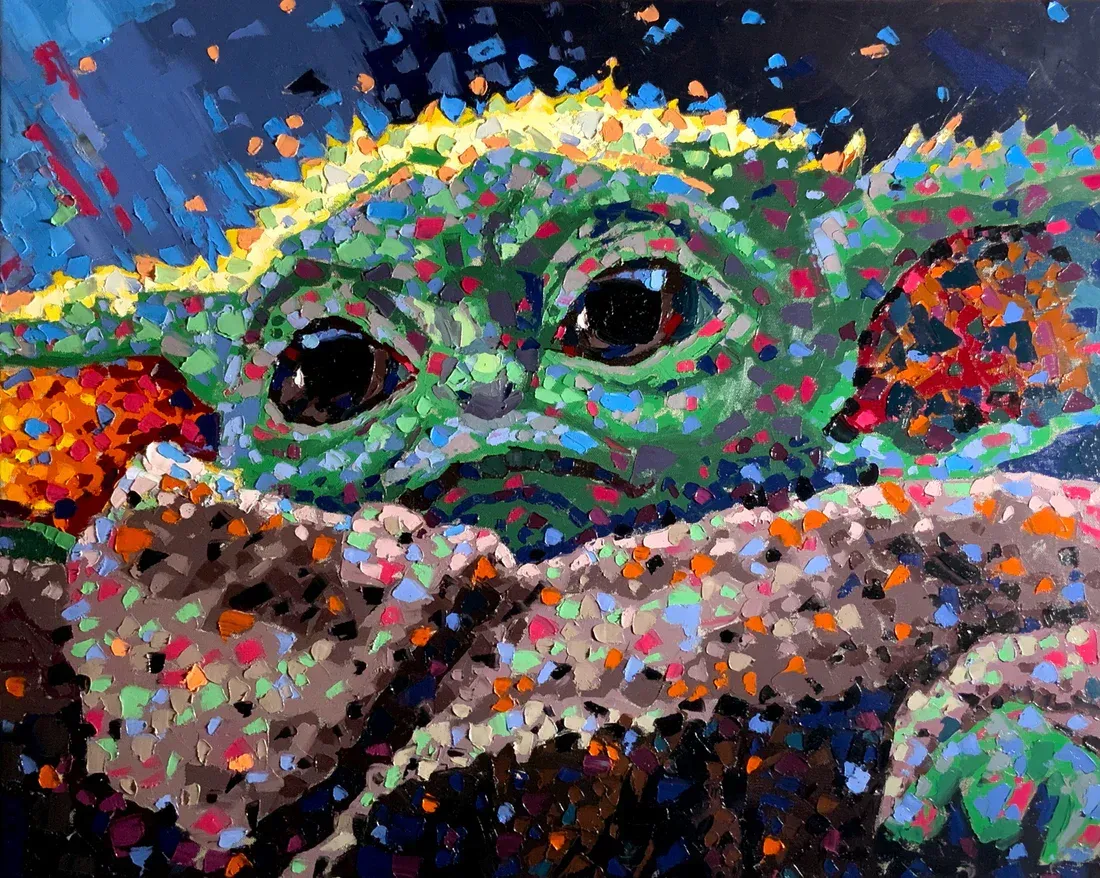Color Chording
Turning Music into Visual Art
What is Color Chording?
The Spark: A Gut Feeling
For years I imagined there could be a connection between sound and color, a relationship that ran deeper than metaphor.
I know that both are made of vibrations, both move in waves, and both live on a frequency spectrum that affects us
emotionally before it ever reaches the brain.
I started asking:
If music can move us, can it also guide the palette?
If chords create harmony, could color be “played” the same way?
Early Curiosity: Seeing Sound, Feeling Color
Some people experience synesthesia, where sounds or
even notes trigger colors. I don’t have that — but I did draw
a parallel, and tested the hypothesis. I've heard accounts of people who say, "certain notes made me feel like I was seeing
a specific hue." Minor chords – cool tones. Big major progressions – warm blasts.
I started experimenting with the idea:
Could a song create a painting?
Could a favorite chord progression map to a palette?
Collaboration: Building the System
I shared the idea with family and friends.
First a friend of mine John Blasucci (Dennis De Young & the Music of Styx - Mannheim Steamrollers), my mom, and my nephew Andrew Marshall. Andrew is a musician, and a curious sharp-thinker with a talent for music theory.
Together, we started to map out how music theory might line up with the color wheel. Late one night as we were texting trying to flesh out a solution, Andrew added valuable information that connected several dots, and introduced me to the Chromatic music scale. This finally pushed it over the edge.
Together we cracked the code:
“There are 12 notes in the chromatic scale — and 12 hues in the color wheel if you include primary, secondary, and tertiary colors.”
That was the breakthrough and we started matching for example C to red, C# to red-orange, and so on around the wheel. The piano became a visual spectrum and paved the way for Color Chording (coined by my sister-in-law Megan Bouck).
Refining the Model: HSV
From there, I dove deeper.
• Hue lined up with note pitch
• Saturation felt like volume or intensity
• Value (light vs dark) worked like musical dynamics — whisper to crescendo
• Texture — applied through palette knife — brought in the feel of rhythm, the rawness of live performance
Color Cording became a way to compose a painting the way you’d compose a song — emotionally, structurally, and intuitively.
The Result: Custom Emotional Expression
People often ask:
“How do you choose your colors?”
With Color Cording, I don’t just choose — I translate and it can be flexible as well. I take a song, and I build a color palette or color scheme from its DNA.
Sometimes it’s a client’s favorite track. Sometimes it's just the chorus. Sometimes it’s just something I hear that unlocks a memory.
Every painting becomes personal. It’s a visual record of sound — something you can feel and see, even if you’ve never heard the music that inspired it.
And for those who know the song?
They see it in a new way — as color. As movement. As story.
Color Chording Examples
Beautiful Day

Title: "Beautiful Day"
48" x 36"
Oil on Canvas
Color Chording:
“Beautiful Day” — U2
Mandalorian Theme

Title: "This is the Way"
48" x 36"
Oil on Canvas
Color Chording:
“Mandalorian Theme” — Ludwig Göransson
Here Comes the Sun

Title: "Here Comes the Sun"
36" x 36"
Oil on Canvas
Color Chording:
“Here Comes the Sun” — Beatles
Still have questions?
Contact me!
Connect with us
Instagram. TikTok. YouTube. It’s like a backstage pass, minus the sweaty concert part. Come see what’s cooking in the studio.
Copyright brandonbouck.com All rights reserved.
Privacy Policy Terms and Conditions
